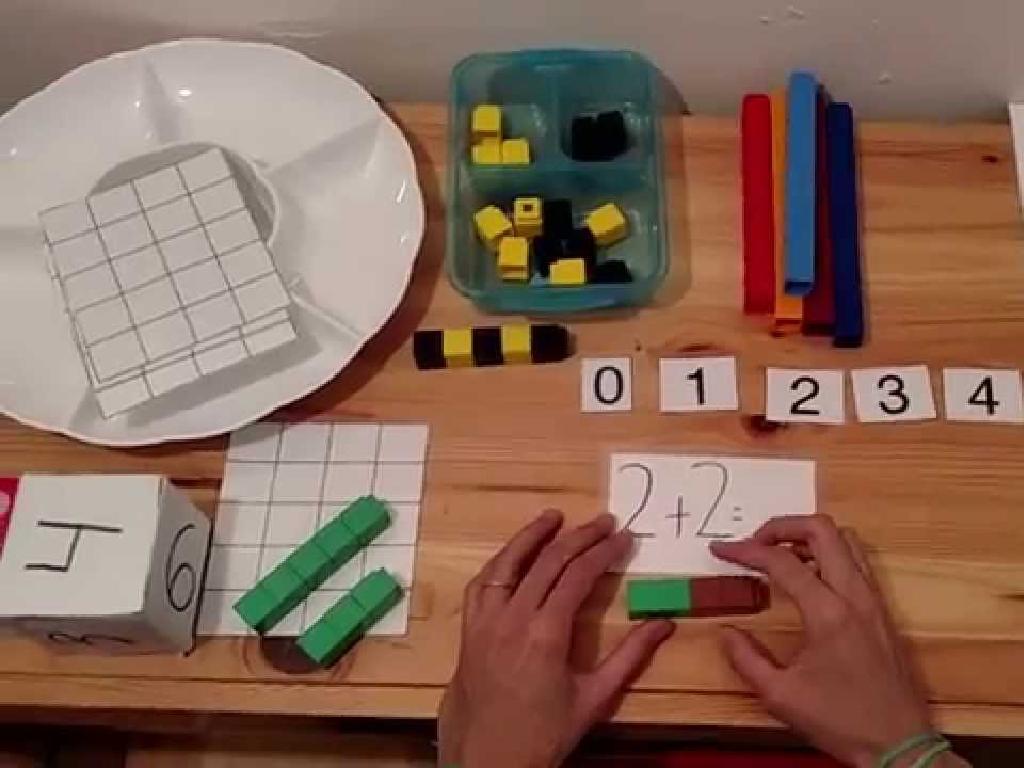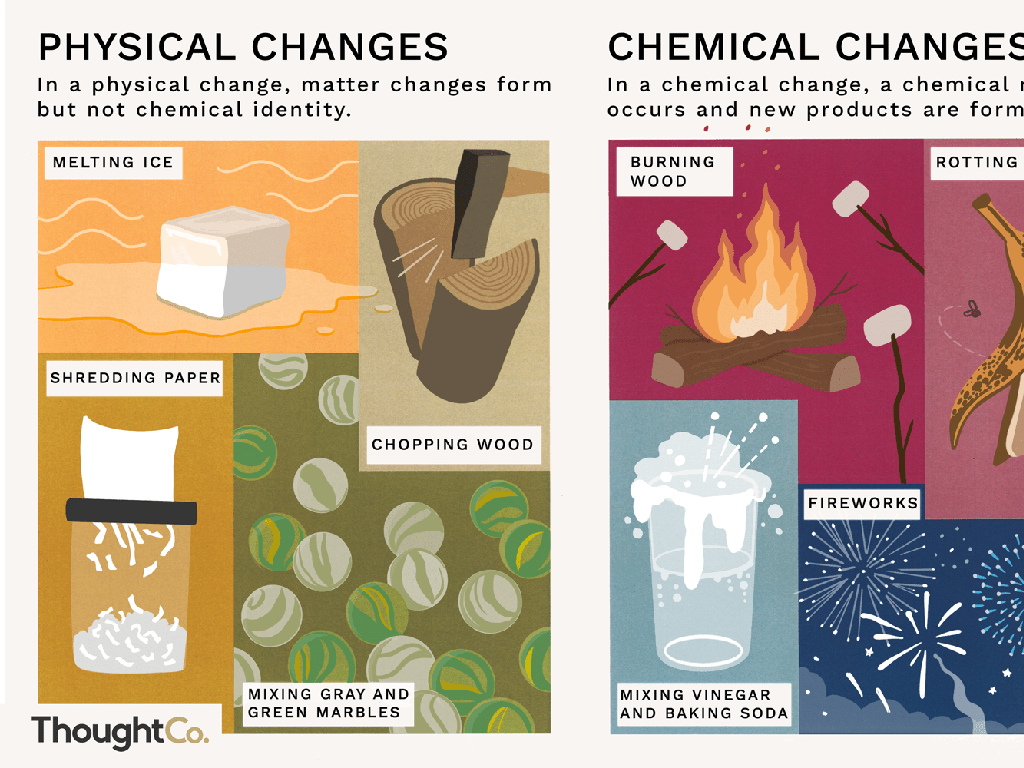Is The Word An Adjective Or Adverb?
Subject: Language arts
Grade: Fifth grade
Topic: Adjectives And Adverbs
Please LOG IN to download the presentation. Access is available to registered users only.
View More Content
Adjectives vs. Adverbs
– Welcome to Language Arts!
– Role of adjectives and adverbs
– Adjectives describe nouns, adverbs describe verbs
– Examples in sentences
– Adjective: ‘The quick fox’, Adverb: ‘He runs quickly’
– Practice distinguishing them
– We’ll identify adjectives and adverbs in class activities
|
This slide introduces the concept of adjectives and adverbs to the students. Begin by welcoming the students and expressing excitement about exploring parts of speech. Explain that adjectives are words that describe nouns, giving us more information about things like size, color, and shape. Adverbs, on the other hand, modify verbs, adjectives, or other adverbs, often ending in ‘-ly’ and telling us how, when, where, or to what extent an action is performed. Provide clear examples for both and prepare interactive activities where students can practice distinguishing between adjectives and adverbs in sentences. This foundational understanding will help them in writing more descriptive and precise sentences.
Understanding Adjectives
– Adjectives describe nouns and pronouns
– Words that give more information about a person, place, or thing
– They specify ‘what kind’, ‘how many’, or ‘which one’
– ‘What kind’ can be a color or feeling, ‘how many’ refers to quantity, ‘which one’ points to a specific item
– Examples: ‘happy’, ‘blue’, ‘seven’, ‘last’
– ‘Happy’ tells us the kind of mood, ‘blue’ describes the color, ‘seven’ indicates the number, ‘last’ specifies the order
|
This slide introduces the concept of adjectives to the students. Explain that adjectives are words that describe or give more information about nouns and pronouns, which are people, places, things, or ideas. They can tell us what kind of thing it is, how many there are, or which particular one it is. Use examples like ‘happy’ to describe a mood, ‘blue’ for color, ‘seven’ for quantity, and ‘last’ for position in a sequence. Encourage students to think of their own examples and to look for adjectives in sentences. This will help them understand how adjectives function within a sentence to provide more detail.
Exploring Adverbs
– Adverbs modify verbs and more
– They describe verbs, adjectives, or other adverbs
– Adverbs answer key questions
– They tell us ‘how’, ‘when’, ‘where’, ‘how much’, ‘how often’
– Examples of common adverbs
– ‘quickly’ shows how, ‘yesterday’ shows when, ‘outside’ shows where
– Practice identifying adverbs
|
This slide introduces the concept of adverbs to the students, explaining their role in a sentence and how they modify not just verbs, but also adjectives and other adverbs. Emphasize the types of questions adverbs answer to give students a framework for understanding their use. Provide clear examples like ‘quickly’, ‘yesterday’, ‘outside’, ‘very’, and ‘often’ to illustrate the different kinds of adverbs. Encourage students to come up with their own sentences using these adverbs to reinforce their learning. In the next class, plan activities where students identify adverbs in sentences and categorize them based on the questions they answer.
Identifying Adjectives in Sentences
– Find adjectives in sentences
– Look for words that describe nouns, like ‘blue’ in ‘the blue sky.’
– Understand why a word is an adjective
– An adjective gives more information about a noun or pronoun.
– Discuss adjective impact on nouns
– Adjectives like ‘happy’ can change ‘dog’ to ‘happy dog,’ showing emotion.
– Practice with example sentences
|
This slide is aimed at helping students identify adjectives within sentences and understand their role in providing more information about nouns. Start by explaining that adjectives are words that describe or modify nouns. Show examples of sentences and guide students to find the adjectives. Discuss why certain words are adjectives and what questions they answer, such as ‘Which one?’, ‘What kind?’, and ‘How many?’. Highlight how adjectives can change the meaning of a noun, making it more specific or giving it a different quality. Encourage students to practice with example sentences and create their own sentences using adjectives to describe nouns.
Identifying Adverbs in Sentences
– Finding adverbs in examples
– Look for words that describe how, when, or where actions happen
– Understanding why a word is an adverb
– An adverb often ends in -ly and modifies verbs, adjectives, or other adverbs
– Discussing adverb and verb relationship
– Adverbs tell us more about the action, like ‘He ran quickly’
– Exploring adverb and adjective modification
– Adverbs can also intensify adjectives, like ‘very tall’
|
This slide aims to help students identify adverbs within the context of sentences and understand their function. Start by explaining that adverbs are words that modify verbs, adjectives, or other adverbs, often providing information on how, when, or where something happens. Use example sentences and highlight the adverbs, discussing their role in each sentence. Encourage students to look for common adverb indicators, such as the suffix -ly. Provide exercises where students pick out adverbs from sentences and explain their purpose. For instance, in the sentence ‘She sings beautifully,’ ‘beautifully’ is an adverb modifying the verb ‘sings.’
Adjectives vs. Adverbs: Exploring Words
– Similarities and differences
– Both describe, but adjectives modify nouns, adverbs modify verbs, adjectives, or other adverbs.
– Pair work: Identify words in sentences
– Work with a partner to find adjectives and adverbs in sentences.
– Group discussion: Why adjective or adverb?
– Discuss as a group the reasons for your choices.
– Understanding usage in context
– Learn how the role of a word in a sentence determines its type.
|
This slide introduces the concept of adjectives and adverbs, focusing on their similarities and differences. Begin by explaining that both adjectives and adverbs add detail and description to our sentences, but they serve different functions. Adjectives describe nouns, while adverbs typically modify verbs, adjectives, or other adverbs. Organize the class into pairs and provide them with sentences where they have to identify adjectives and adverbs. Follow this with a group discussion to deepen their understanding of why certain words function as adjectives or adverbs, emphasizing the importance of context. This activity will help students recognize how words can change their role depending on how they are used in a sentence.
Interactive Game: Adjective or Adverb?
– Play ‘Adjective or Adverb?’ game
– Students classify words on the board
– Take turns to decide if a word describes a noun (adjective) or a verb (adverb)
– Receive immediate feedback
– Understand why it’s an adjective or adverb
– Learn the reasons behind each answer
|
This interactive game is designed to help students practice distinguishing between adjectives and adverbs in a fun and engaging way. Set up the game by preparing a list of words that are either adjectives or adverbs. Students will be invited to the board to choose a word and decide if it is an adjective, which describes a noun, or an adverb, which usually describes a verb, an adjective, or another adverb. After making their choice, provide immediate feedback to affirm correct answers or to explain why a different choice would be more appropriate. This activity not only reinforces their understanding of adjectives and adverbs but also allows them to actively participate in their learning process. For the teacher’s reference, prepare several examples of sentences where the classification of words as adjectives or adverbs may be tricky, to ensure a comprehensive learning experience.
Class Activity: Adjectives vs. Adverbs
– Craft sentences with adjectives and adverbs
– Remember, adjectives describe nouns and adverbs describe verbs!
– Exchange sentences with a classmate
– Share what you think about your partner’s sentences.
– Volunteer to read sentences aloud
– Practice public speaking and listening skills.
– Discuss adjective and adverb usage
– Why did you choose the adjectives and adverbs you used?
|
This activity is designed to reinforce the students’ understanding of adjectives and adverbs. Have the students create their own sentences that include both an adjective and an adverb. After writing their sentences, they should pair up with a partner to exchange and discuss their sentences. Encourage them to consider how the adjectives and adverbs change the meaning of the sentences. Then, ask for volunteers to read their sentences to the class, which will help build confidence in public speaking. Finally, lead a discussion on why certain adjectives and adverbs were chosen and how they enhance the sentences. Possible activities: 1) Create a sentence gallery walk, 2) Sentence construction relay, 3) Adjective and adverb charades, 4) Sentence improvement competition, 5) Adjective and adverb ‘detective’ game.
Homework: Adjectives vs. Adverbs
– Complete ‘Adjective or Adverb?’ worksheet
– Underline adjectives and adverbs
– Find describing words and words that describe actions
– Write sentences with adjectives and adverbs
– Create your own examples using descriptive words
– Share your sentences next class
|
This homework assignment reinforces the lesson on adjectives and adverbs. Students are to complete a worksheet where they will practice identifying adjectives and adverbs within given sentences. They should underline each adjective and adverb they find. Additionally, students are tasked with writing two original sentences, one using at least one adjective and the other using at least one adverb. This exercise will help them apply their understanding of how adjectives and adverbs function within a sentence. In the next class, students will have the opportunity to share their sentences, allowing them to learn from each other’s examples. Provide guidance on how adjectives describe nouns and adverbs modify verbs, adjectives, or other adverbs, often ending in ‘-ly’. Encourage creativity in sentence construction.
Wrapping Up: Adjectives vs. Adverbs
– Recap today’s key points
– Importance of distinguishing
– Knowing the difference helps in crafting precise sentences.
– Preview: Comparatives & Superlatives
– Next lesson, we’ll explore how to compare things using adjectives and adverbs.
– Engage with a quick activity
– Think of an adjective and an adverb you learned today.
|
As we conclude today’s lesson, it’s crucial to review the key points to reinforce the students’ understanding of adjectives and adverbs. Emphasize the importance of distinguishing between the two, as it allows for more accurate and expressive communication. Give a brief introduction to comparatives and superlatives to pique students’ interest for the next lesson. To ensure engagement, end with a quick activity where students think of an adjective and an adverb they learned today, which will help solidify their grasp of the concepts.






